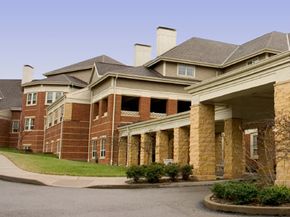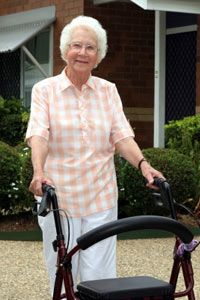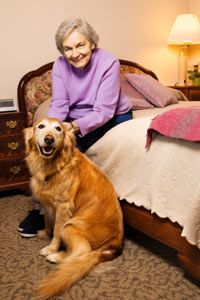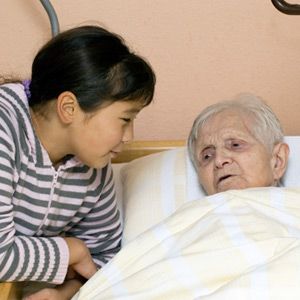Home, sweet home. You can spend a lifetime saving up for a house and then renovating it, decorating it, making memories in it and getting it to the perfect intersection of function, comfort and appearance. Home is a place to invite friends and loved ones, but it's also a place to retreat from friends and loved ones. Living independently in your own home -- be it a rented apartment, condominium or house -- may be the most fundamental expression of personal freedom. None of us want to get to the point in life when we can't take care of ourselves.
As a person gets older, family members, friends and neighbors begin dropping by to check on him or her to see if help is needed. Maybe a slip on wet bathroom tile or a medical emergency will worry loved ones -- not to mention the person in question -- even further. A family member may move in, but over time that arrangement often stops being a good one for either party. The at-risk family member is accustomed to freedom; the caregiving family member has a life of his or her own that needs attention.
Advertisement
The family starts talking about care options, but none of them seem appealing at first. As time passes, the elderly relative needs more and more attention -- more, frankly, than family members know how to give. And while the care isn't constant (the relative still gets around, after all -- it's just that she gets, well, forgetful sometimes), it is consistent day to day. She needs help getting dressed, or he needs help getting safely in and out of the tub. Also, cooking is becoming more difficult, but after the relative is clean, dressed and fed, all parties involved would like some private time until lunch. The thing is, if you step out to run some errands, who will know if your older loved one has taken a fall down a set of stairs while you're gone? Even though you're not needed all the time, a sense of "nearness" is. Your loved one doesn't need to be laid up in a nursing home (not to mention the expense!), but something different from the status quo is called for.
The answer may be assisted living. Assisted living facilities provide a step between fully independent living and around-the-clock care. It's for people who value their independence, yet need some help with life's daily chores and necessities.
Advertisement






